Ice Axe Mastery: Harnessing the Ice Axe’s Potential
Knowledge Base
Ice Axe An Essential Tool for Mountaineering and Glacier Travel
Firstly, when it comes to mountaineering and glacier travel, safety is paramount. One tool that has been a staple for adventurers tackling icy terrains is the ice axe. This versatile and reliable instrument serves as both a climbing aid and a vital safety tool. This article will go through the many pieces of an ice axe and offer detailed instructions on how to utilize this necessary piece of equipment.
Parts of an Ice Axe:
Pick: The Sharp Edge of Grip

The pick, typically made of hardened steel, serves as the pointed metallic end of the ice axe. Its purpose is to grip and stabilize climbers by firmly biting into the ice. The pick is often curved or slightly angled, enabling effective self-arrest techniques.
Adze: Carving Paths in Ice
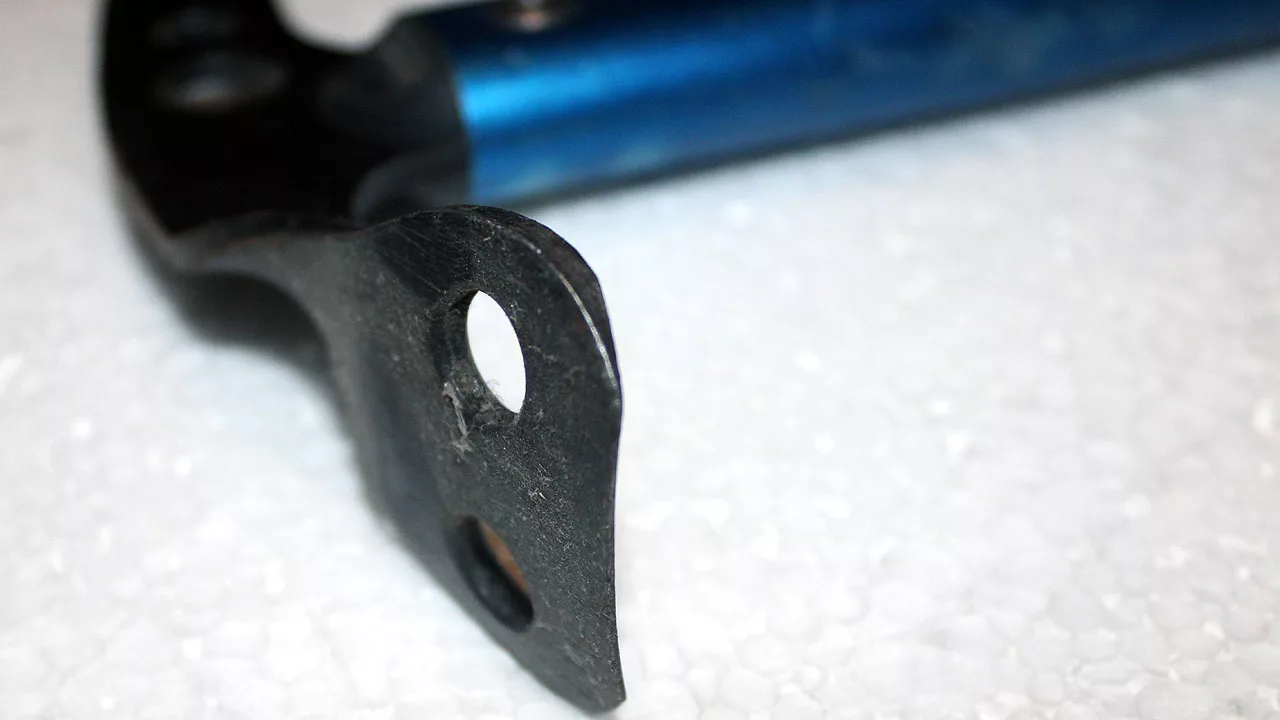
The Adze is Positioned on the opposite side of the pick. The adze is a flat or slightly curved blade. Its primary function is to create footholds by chopping steps into hard-packed snow or ice. Additionally, the adze can be employed for cutting ice blocks, constructing snow shelters, or digging snow pits to evaluate the risk of avalanches.
Shaft: Strength and Stability in Hand
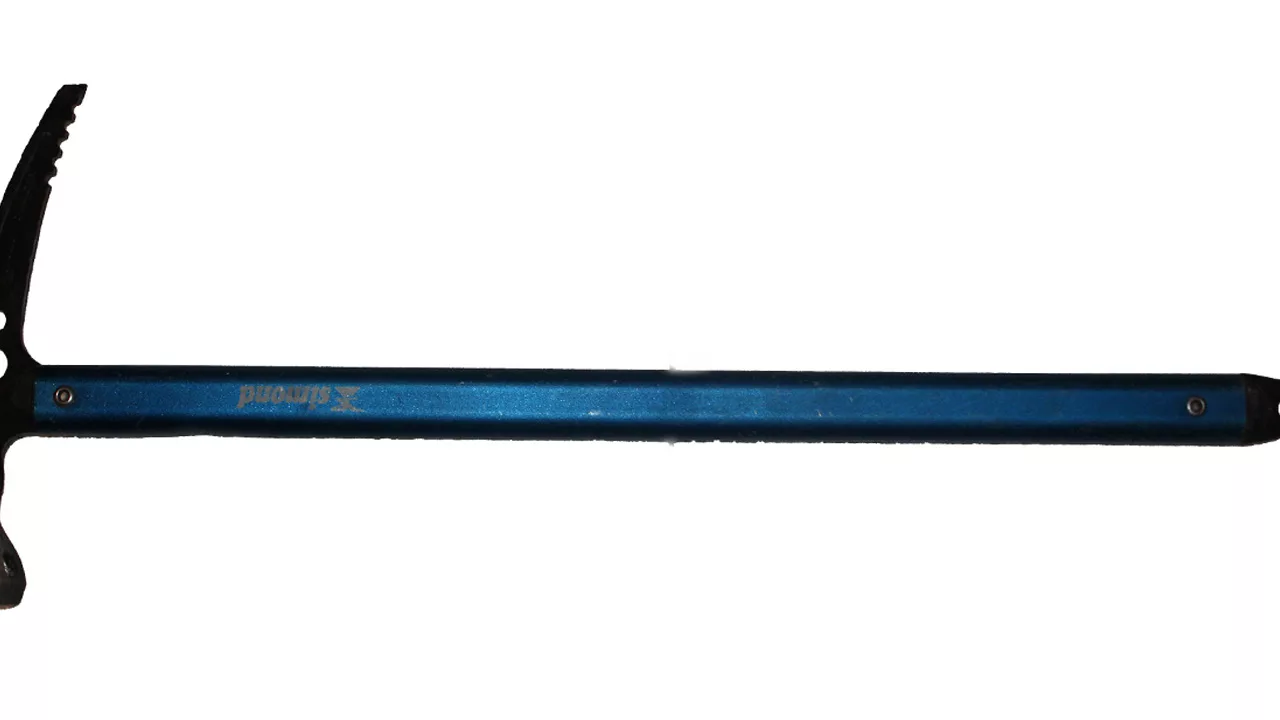
The Shaft is Constructed from lightweight yet durable materials such as aluminum or carbon fiber. The shaft is the elongated, tubular component that connects the pick and adze. It provides climbers with leverage and serves as a handle, facilitating a secure grip during ascents.
Spike: Anchoring Confidence in Every Step
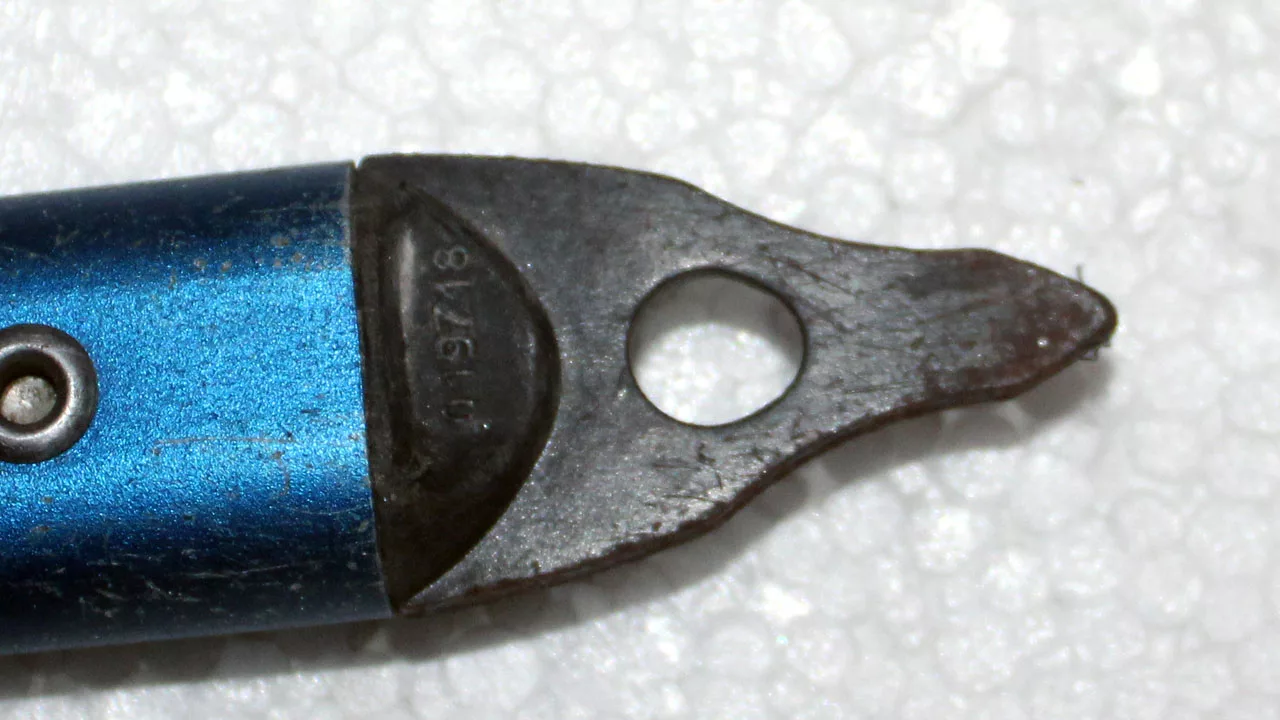
The spike is at the lower end of the shaft. The spike features a pointed metal tip designed to penetrate snow, affording stability when used as a walking or resting stick. Furthermore, the spike can be utilized to create anchor points in soft ice or snow.
Grip: Secure Hold for Icy Ventures
The grip, located just above the shaft, serves as the handle of the ice axe. It is typically made of rubber or a textured material to ensure a secure and comfortable hold. Also, some grips incorporate ergonomic contours or finger grooves, enhancing control and maneuverability.
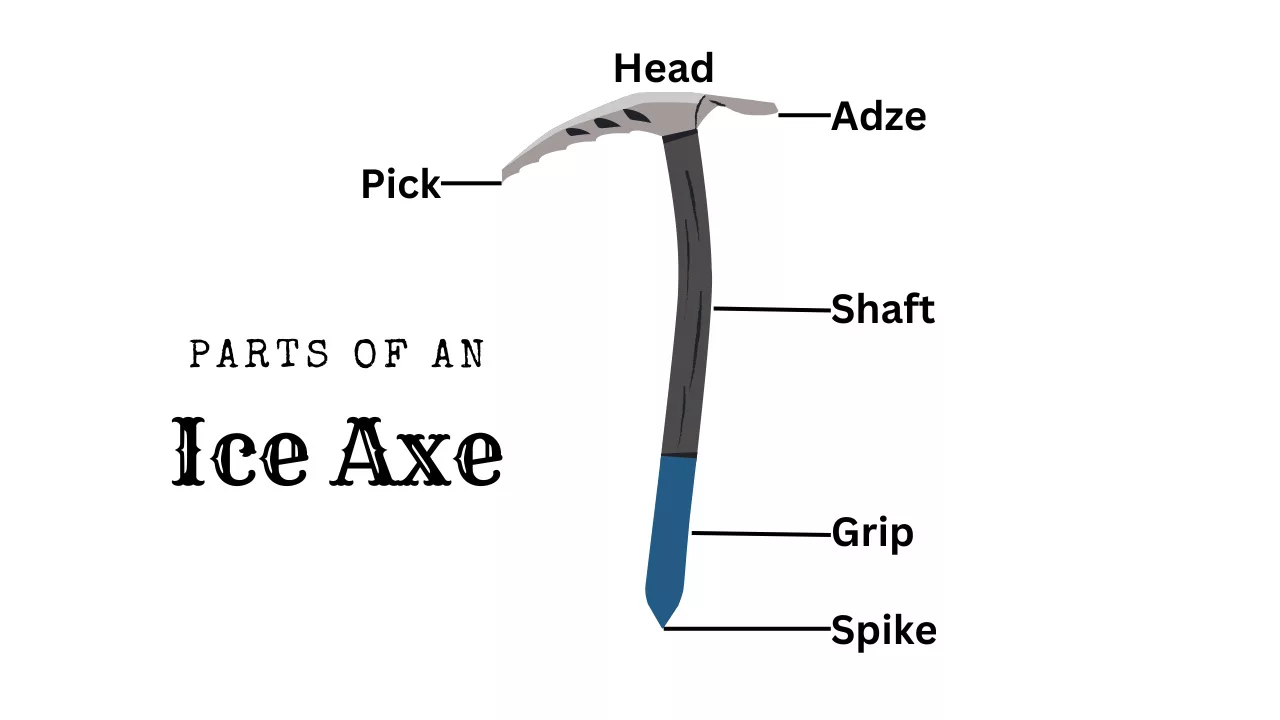
How to Use an Ice Axe:
Basic Grip:

To employ the ice axe, grasp the grip firmly with your dominant hand, ensuring that your fingers encircle it securely. Basically, position your thumb atop the grip for enhanced control. Keep your other hand free to maintain balance and provide support.
Self-Arrest Technique:
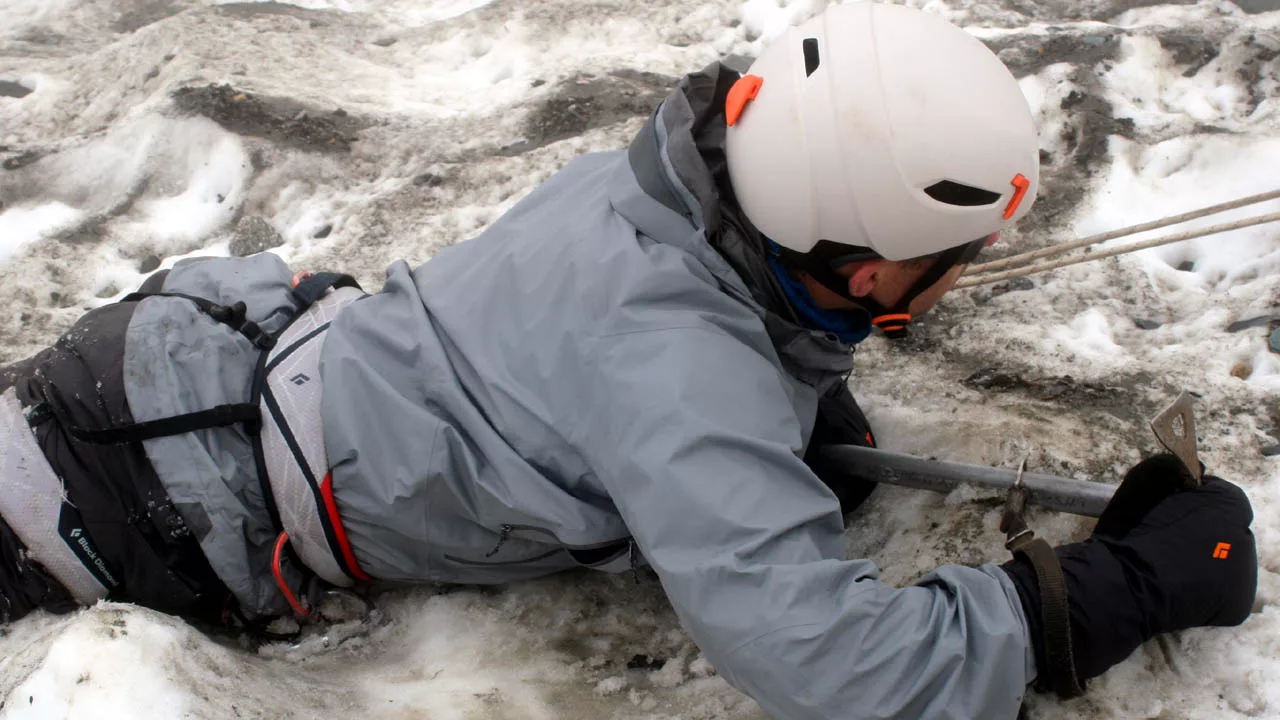
Should you experience a fall on a steep slope, the ice axe can be instrumental in self-arresting to prevent a slide. Swiftly roll onto your stomach and embed the pick into the slope. Angle the shaft diagonally across your body, utilizing your body weight to anchor the pick firmly into the snow or ice. Maintain a low body position and extend your arm to maximize friction, gradually slowing down or halting the slide.
Belaying:

Ice axes can also be utilized for belaying, acting as secure anchor points for ropes during climbing. Insert the pick firmly into the snow or ice, ensuring it maintains a stable position. Employ appropriate knots to attach the rope securely to the axe, utilizing it as a reliable point of attachment for protection and safety.
- Learn more about Belay and Belaying

Step Cutting:
When ascending a slope lacking existing footholds, utilize the adze of the ice axe to cut steps into the ice. Begin by positioning your feet close together, facing the slope. Swing the adze firmly into the ice at an angle and create sufficiently deep steps to secure your entire boot’s placement. Repeat this process, establishing a series of steps to facilitate safe and stable progress.
Use as a Cane:
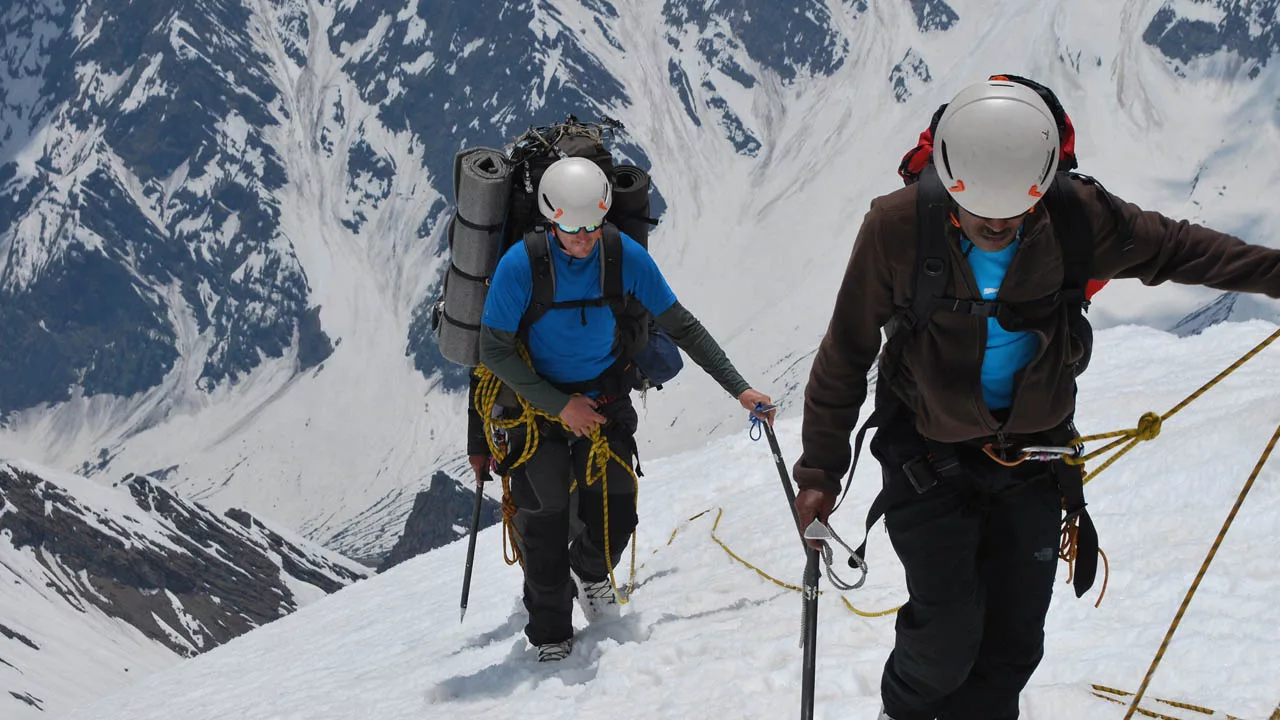
In less steep or flat terrain, an axe can be utilized as a walking cane. Grasp the axe from the head and use the spike on the snow, utilizing it to provide additional support and aid in maintaining balance. Ensure that the spike penetrates the surface of the snow or ice to offer stability while walking.
Bottom Line:
Lastly, the Ice axe is an essential tool for mountaineering and glacier travel, offering climbers and adventurers a wide range of uses and increased safety. Understanding the various parts of an ice axe and mastering its proper usage is crucial for anyone venturing into icy environments. Remember to practice using an ice axe in controlled conditions and seek guidance from experienced climbers or mountaineering professionals to ensure proper technique and safety.

Faq
An ice axe is a versatile tool used in mountaineering and glacier travel. It consists of a pick, adze, shaft, spike, and grip. The pick is a pointed metallic end used for gripping and stability on ice, while the adze is a blade for cutting steps and various tasks. The shaft connects the pick and adze and provides leverage. The spike offers stability on softer surfaces, and the grip is the handle for a secure hold. Overall, an ice axe is an essential instrument for safety and climbing assistance in icy environments.
The decision between an ice axe and a trekking pole is determined by the activity and terrain. An ice axe is the recommended instrument if you are primarily engaged in mountaineering, glacier travel, or ice climbing. It offers critical support on steep icy slopes, assists with self-arrest during falls, and enables step cutting in hard-packed snow or ice. Trekking poles, on the other hand, are frequently more appropriate for hiking or trekking on non-technical paths or in changing terrain. Trekking poles offer stability, minimize joint strain, improve balance, and can be used to increase endurance on lengthy walks. Finally, it is critical to analyze the unique requirements of your activity and select the instrument that best suits the terrain, level of difficulty, and terrain.
When choosing an ice axe for mountaineering, it is important to evaluate the unique needs of your desired routes and objectives. Mountaineering requires a flexible and dependable ice axe with a curved pick, an adze, and a comfortable grip. Also, it is advised that you select an ice axe that is the suitable length for your intended application and is composed of lightweight yet sturdy materials. Consultation with experienced climbers or specialists at outdoor equipment stores can also give useful insights and advice geared to your unique needs.